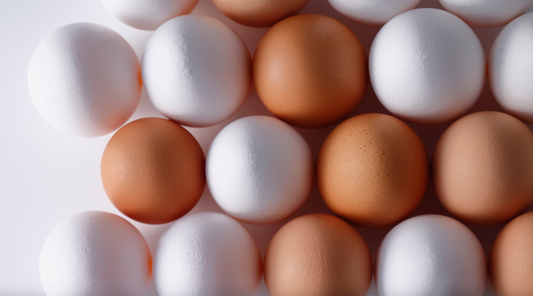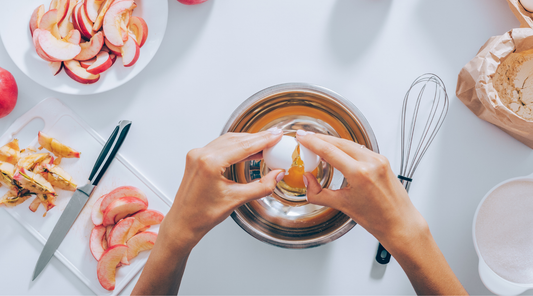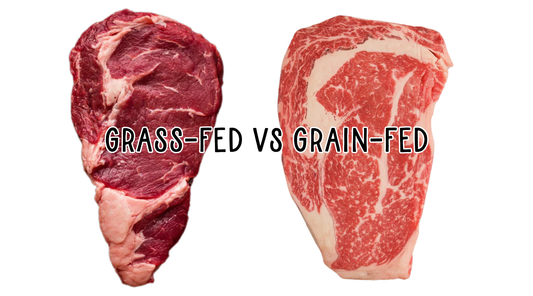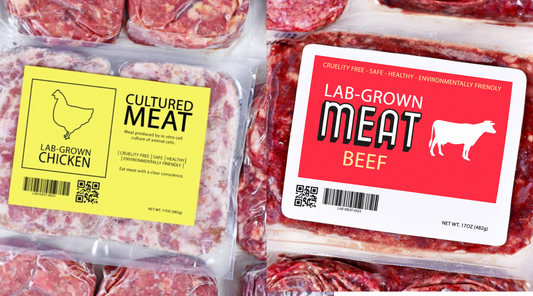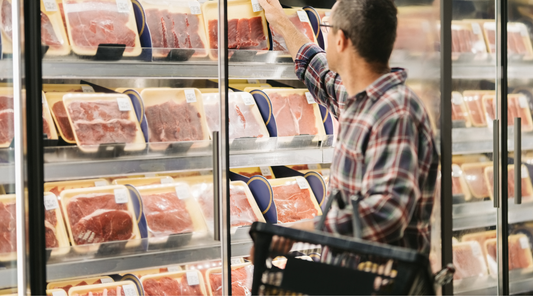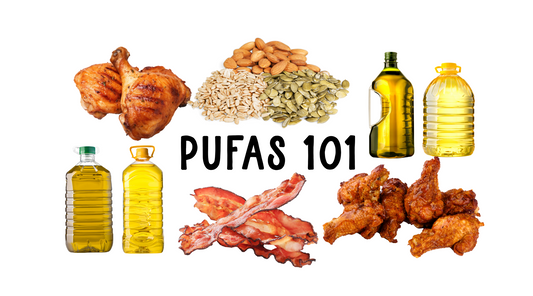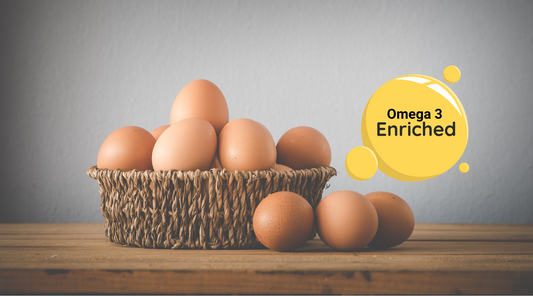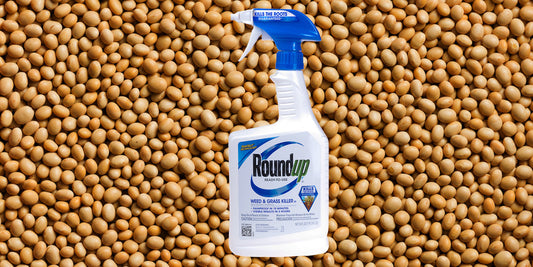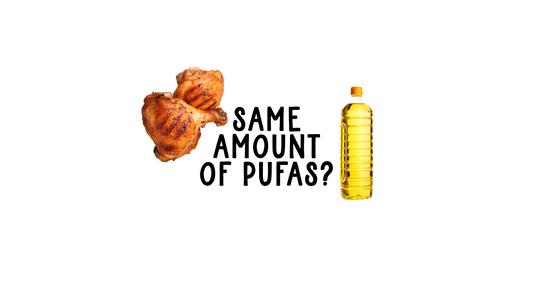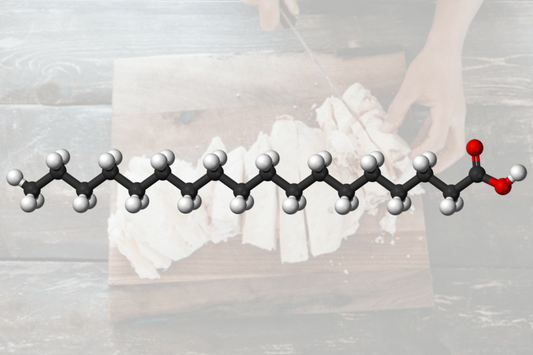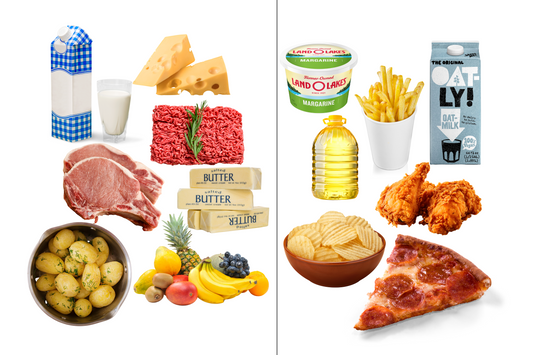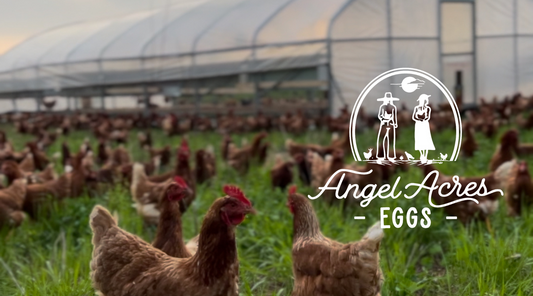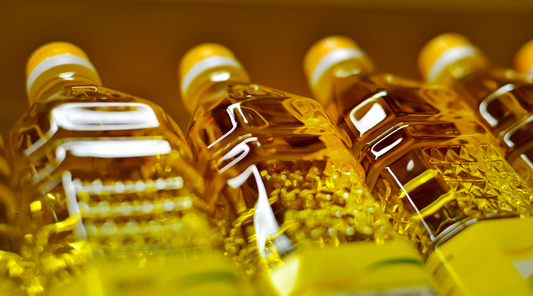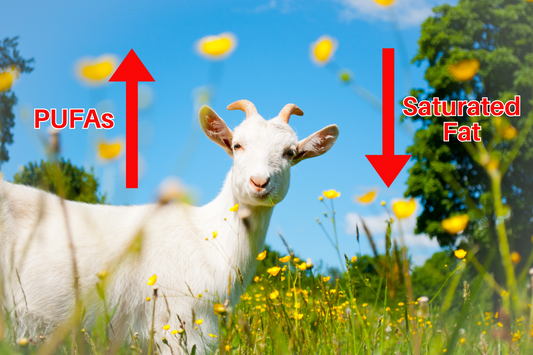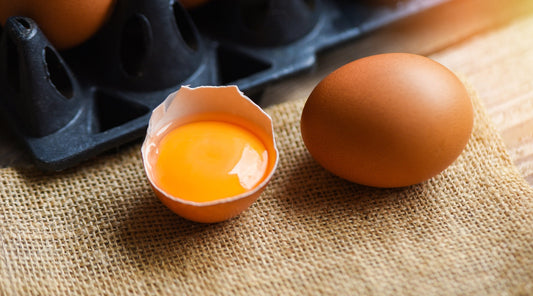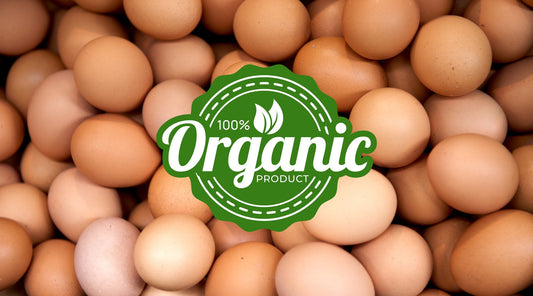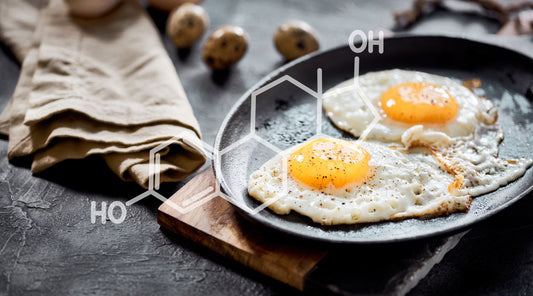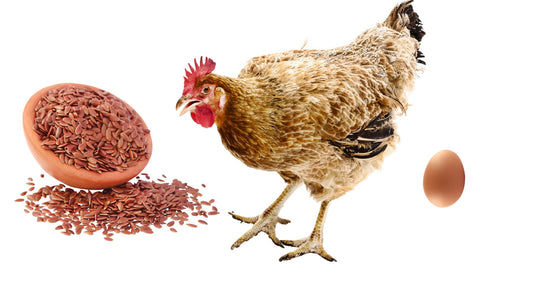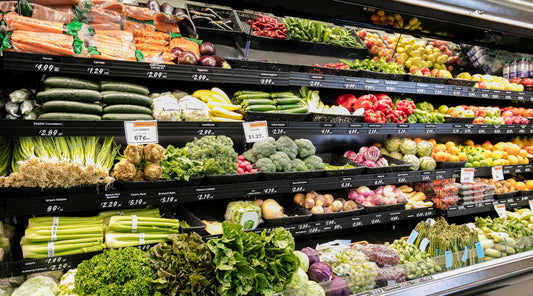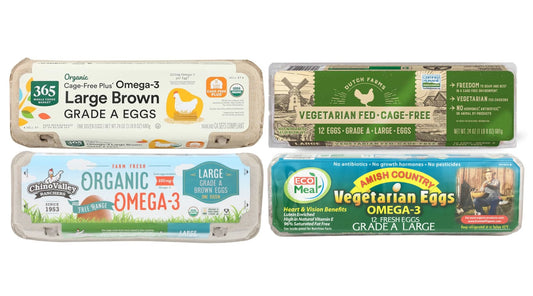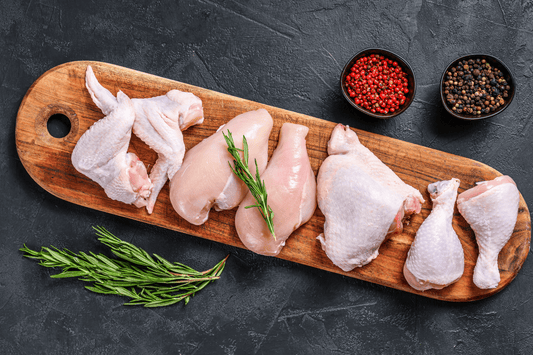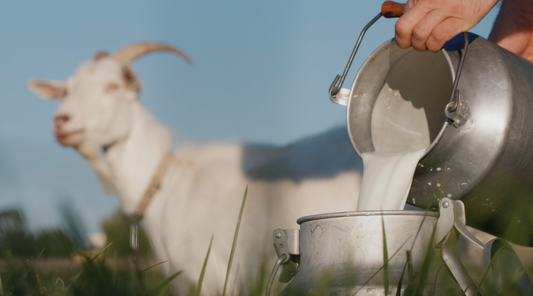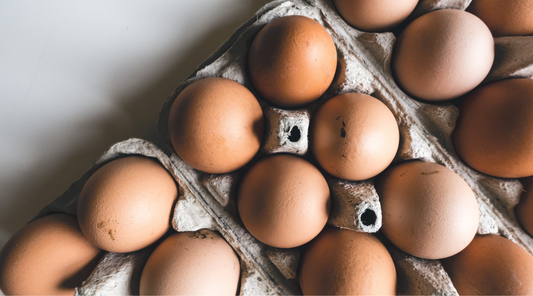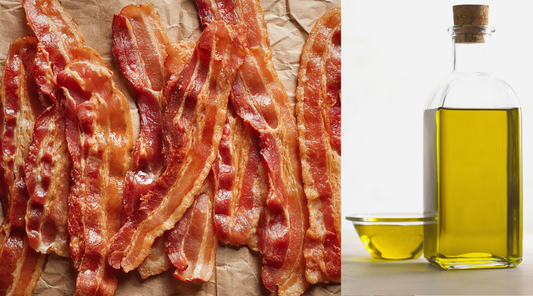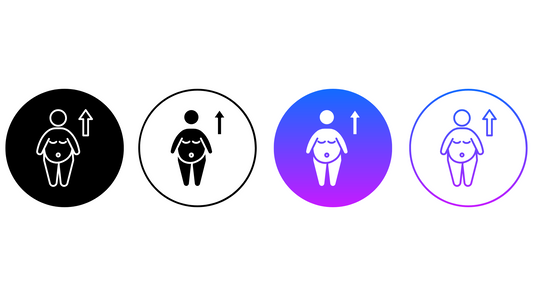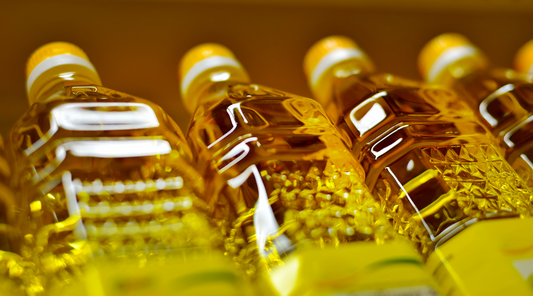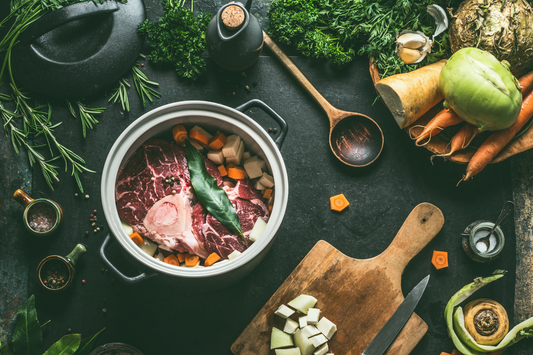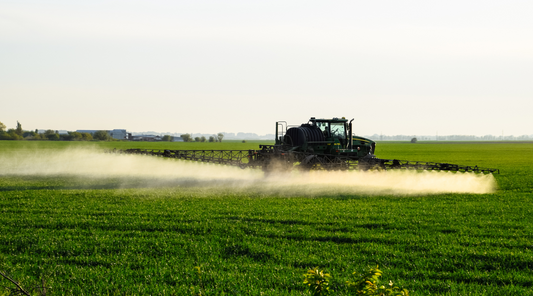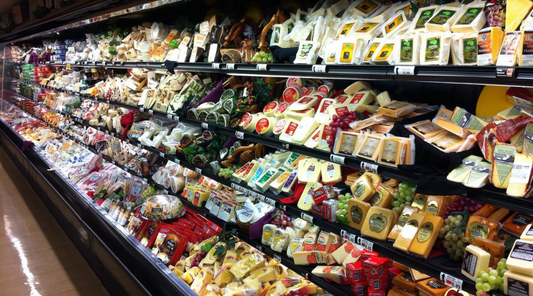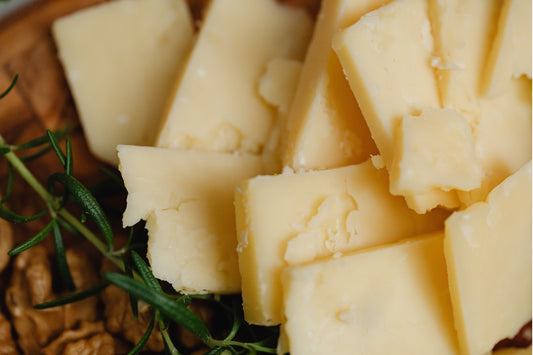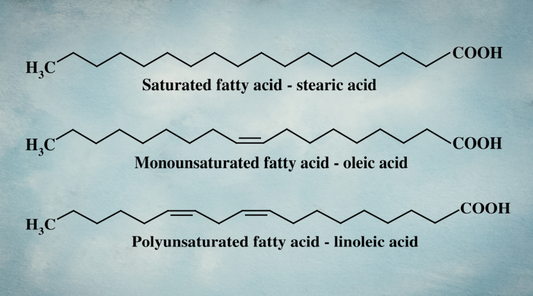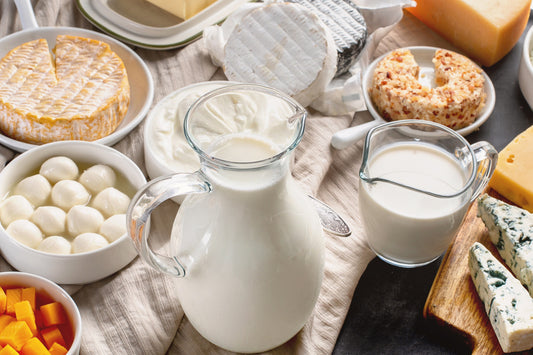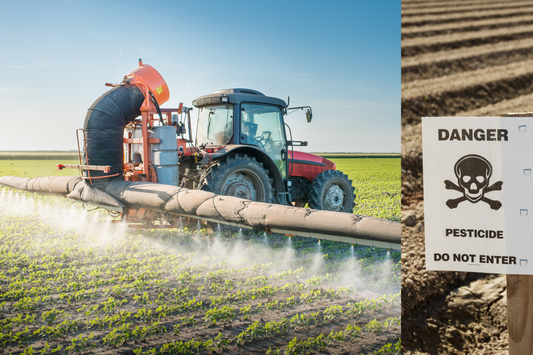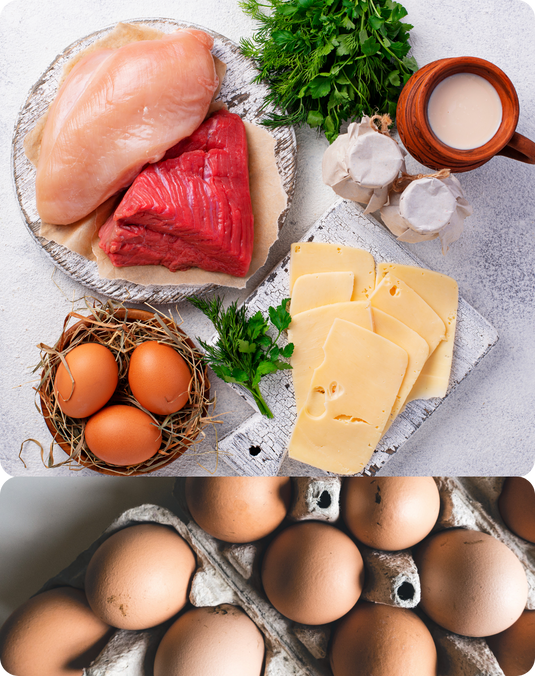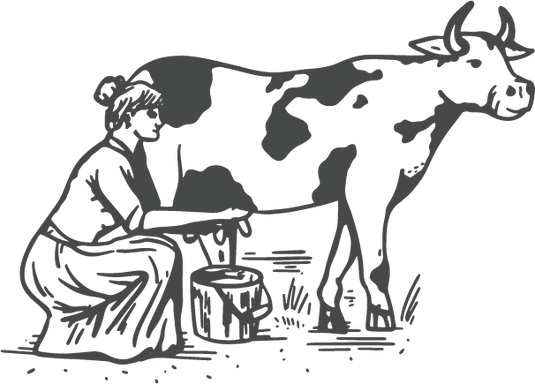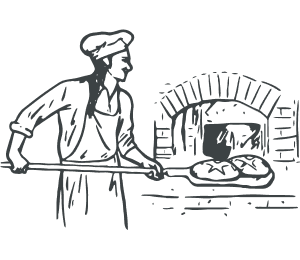
Hidden Sources of PUFAs in Your Diet
You’ve probably heard about seed oils being high in plant-based polyunsaturated fats (PUFAs). But even if you’re avoiding seed oils, have you thought about the types of fat in the chicken and pork you eat?
For generations, traditional animal fats like butter, dairy, and tallow, rich in more stable saturated fats, were dietary staples. But they’ve been pushed aside in favor of highly processed seed oils, plant-based dairy substitutes, and margarine, all high in plant-based PUFAs. This shift didn’t happen naturally; it was driven by aggressive marketing, government subsidies, and misguided health recommendations.
But the change doesn’t stop at what we eat. It extends to what our livestock eat.
Today, chickens and pigs are routinely raised on high-PUFA feeds like soy, dried distillers’ grains, and vegetable oil residues, all while living in confinement with minimal movement. As a result, the fat in pork, chicken, turkey, and even eggs now contains significantly more PUFA than ever before. (r,r)
That’s because chickens, pigs, and turkeys are monogastric animals—like us.
Unlike ruminants, they can’t significantly transform the fats they eat. Instead, they directly deposit dietary fats into their tissues, effectively becoming vehicles for vegetable oils in our food supply.
“Saturated FA levels in [chicken fat tissue] decreased significantly both linearly and quadratically with an increase in dietary PUFA…The concentration of linoleic acid increased significantly (P = .0001) with an increase in dietary PUFA.” (r)
In other words, more PUFA in their feed leads directly to more PUFA (and less saturated fat) in the meat and fat we consume.
Because of this massive shift, some estimates report that chicken is now the highest source of linoleic acid (LA) in the American diet (r) . Confinement-raised pork and chicken fat can even have a fatty acid profile resembling canola oil!
Many researchers remain so committed to the old idea that “PUFAs = good, saturated fat = bad” that they miss the irony in their own observations:
“It’s well known that although dietary PUFA improves meat nutritional qualities, such meats are more susceptible to lipid oxidation during processing.” (r)
PUFAs are highly unstable when exposed to heat, light, and oxygen—exactly the conditions of cooking. Unsurprisingly, research confirms that meats higher in PUFAs oxidize more readily when cooked (r).
Yet despite this, the industry continues to push for more PUFAs in the name of “health”:
“Overall, decreasing the content of SFA and increasing the content of UFA have become the trend of improving the nutritional quality of pork.” (r)
Very few people realize just how deeply our modern food system has been shaped around this flawed narrative.
We’re not just changing our own diets; we’re changing the nutritional profile of the entire food chain.
But it wasn’t always this way. Traditionally, pork and chicken had a higher ratio of saturated to unsaturated fats, thanks to different, more natural diets and the ability to forage on pasture. The conventional system fundamentally altered that balance, reshaping the very structure of the fats we consume.
If you can’t access low-PUFA, corn- and soy-free chicken and pork, your best bet is to prioritize ruminant meats like beef, lamb, and bison, which naturally contain lower PUFA levels. Or, choose leaner chicken and pork cuts like breasts and pork tenderloin.
At Nourish Food Club, we’re committed to going back in time to old-school, regenerative farming practices.
Our livestock are raised on small farms with custom, low-PUFA feed that is lab-tested to ensure the chicken, pork, and eggs we offer have significantly lower PUFA levels.
Because real health isn’t just about avoiding seed oils… it’s about rebuilding an entire food system that supports metabolic health from the ground up.





